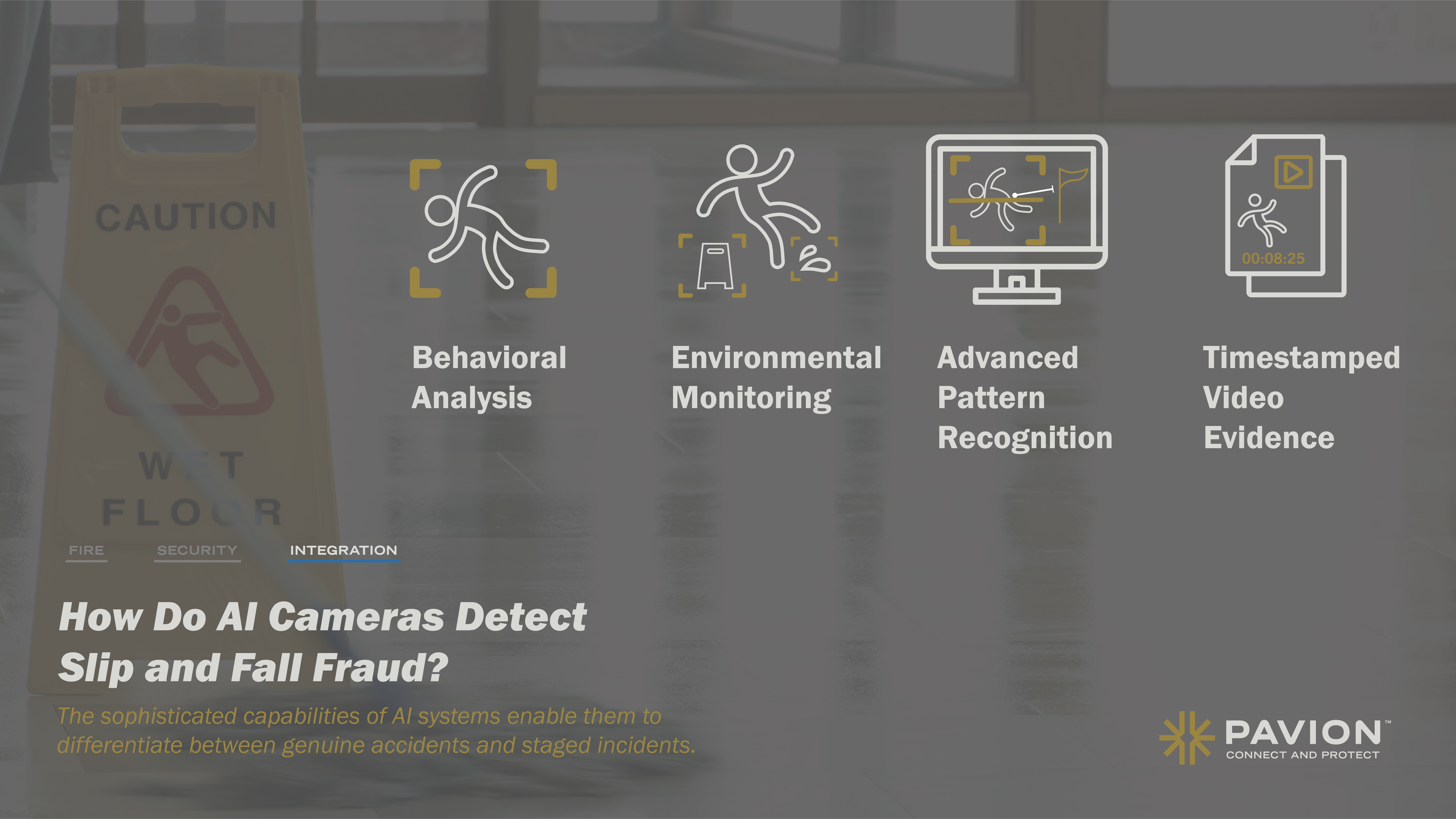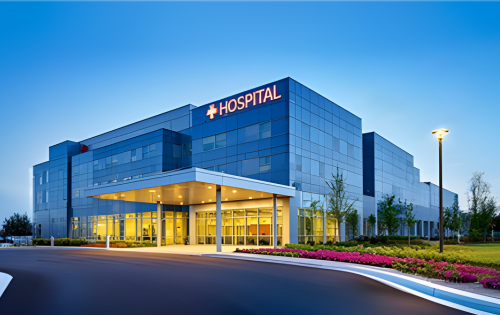
Preventing Slip and Fall Fraud with AI-Driven Security Camera Systems
Slip and fall accidents are among the most common claims businesses face, often resulting in substantial liability costs. While many claims are legitimate, a significant portion are fraudulent, exploiting the vulnerabilities of traditional surveillance systems. Enter the AI security camera system — a transformative technology that not only enhances surveillance but also plays a pivotal role in fraud detection, accident prevention, and liability reduction.
The Cost of Slip and Fall Fraud
Fraudulent slip and fall claims cost businesses millions annually, impacting insurance premiums, legal expenses, and reputations. Industries such as retail, hospitality, and property management are particularly vulnerable. Traditional surveillance technology struggles to provide definitive proof of events, leaving businesses at the mercy of subjective testimonies and inconclusive footage.
However, advancements in AI-driven surveillance technology are changing the narrative. With capabilities such as real-time monitoring, behavioral analysis, and anomaly detection, AI-powered systems offer businesses an edge in combating fraudulent claims and ensuring workplace safety.
What is an AI Security Camera System?
An AI security camera system integrates advanced artificial intelligence algorithms with high-definition cameras to provide real-time analysis and actionable insights. Unlike traditional cameras, AI systems can:
- Detect unusual movements and behaviors.
- Analyze environmental conditions leading to accidents.
- Provide timestamped evidence for liability claims.
These systems use machine learning to identify patterns and anomalies, making them indispensable tools for fraud detection and accident prevention.
During a recent PSA Cybersecurity Committee discussion, Rich Campbell, Pavion’s Training & Development Specialist, joined other members to explore the advanced AI-enhanced capabilities featured in the latest generation of Axis security cameras.
Rich suggested, “the latest generation of ARPTEC AI technology in the cameras allows them to learn patterns of behavior over time. Customers can use this to create custom alerts whenever normal the cameras see deviations from normal behavior patterns. Their ability to learn and store information has become extremely efficient and quick. Customers can also tie these alerts into their monitoring system to create a unified monitoring experience where security personnel can easily locate events in real time and increase their situational awareness. That generates an immediate return on investment. It shows the value of having AI capabilities with IP security cameras.”
How Do AI Cameras Detect Slip and Fall Fraud?
The sophisticated capabilities of AI systems enable them to differentiate between genuine accidents and staged incidents. Here’s how:
- Behavioral Analysis: AI cameras can analyze body movements and detect unnatural behaviors associated with staged falls. For instance, they can identify deliberate pauses or exaggerated movements preceding a fall.
- Environmental Monitoring: AI-driven cameras assess environmental factors such as wet floors, obstructions, or improper signage. By correlating these factors with the incident, businesses can determine the legitimacy of a claim.
- Advanced Pattern Recognition: Machine learning algorithms compare new incidents against a database of past occurrences. If the system detects similarities with known fraudulent patterns, it raises a flag.
- Timestamped Video Evidence: AI systems provide crystal-clear, timestamped footage that can serve as irrefutable evidence in court or insurance investigations.
Are AI Security Cameras Worth the Investment?
While the initial cost of installing an AI security camera system may seem high, the long-term benefits far outweigh the expenses. Here’s why they are worth the investment:
- Cost Savings: By reducing fraudulent claims and associated legal expenses, AI cameras help businesses save significantly.
- Enhanced Safety: Proactive hazard detection prevents accidents, fostering a safer environment for employees and customers.
- Reputation Protection: Demonstrating commitment to safety and fraud prevention strengthens trust with stakeholders.
- Operational Efficiency: Automated monitoring and analysis free up resources that can be redirected to other critical operations.
How Common is Slip and Fall Fraud?
Slip and fall fraud is more prevalent than many realize. According to the National Insurance Crime Bureau (NICB), fraudulent slip and fall claims account for billions of dollars in losses annually. In industries like retail and hospitality, these claims are among the top causes of liability expenses. The ease of staging incidents and the difficulty in disproving claims with traditional surveillance make this type of fraud a persistent issue.
What Role Does AI Play in Fraud Prevention?
AI plays a crucial role in modern fraud prevention strategies. Its ability to analyze vast amounts of data in real time allows businesses to:
- Identify Suspicious Behavior: AI systems flag behaviors and patterns that deviate from the norm, such as unnatural movements or repeated incidents in the same location.
- Monitor High-Risk Areas: By focusing on areas prone to accidents, AI cameras ensure comprehensive coverage and timely hazard alerts.
- Provide Clear Evidence: Timestamped, high-resolution footage from AI cameras is invaluable in disputing fraudulent claims.
- Enhance Compliance: AI helps ensure adherence to safety protocols, further reducing the likelihood of incidents.
Can Cameras Reduce Liability Claims?
Yes, AI security cameras significantly reduce liability claims by:
- Preventing Fraudulent Claims: With detailed analysis and evidence, businesses can dispute false claims effectively.
- Improving Safety Protocols: Real-time hazard alerts and compliance monitoring reduce the likelihood of genuine accidents.
- Providing Concrete Evidence: Clear footage from AI cameras minimizes disputes and accelerates resolution of legitimate claims.
Real-World Applications of AI Security Camera Systems
Businesses across industries are leveraging AI security camera systems to combat slip and fall fraud. Here are a few examples:
Retail environments are high-risk areas for slip and fall incidents due to the volume of foot traffic. AI cameras monitor store aisles and detect hazards like spilled liquids in real time. If an incident occurs, the system’s behavioral analysis helps verify its authenticity.
Hospitality Industry
Hotels and restaurants face frequent liability claims due to wet floors or uneven surfaces. AI cameras’ ability to monitor and document environmental conditions ensures businesses can validate or contest claims effectively.
For property managers, AI cameras monitor common areas such as lobbies, staircases, and parking lots. These systems not only prevent fraudulent claims but also help identify and address potential safety hazards before accidents occur.
The Role of AI in Accident Prevention
Beyond fraud detection, AI security camera systems excel in accident prevention. Here’s how they proactively reduce risks:
- Real-Time Hazard Alerts: AI cameras detect potential hazards, such as liquid spills or misplaced objects, and send instant alerts to staff for immediate action.
- Compliance Monitoring: These systems ensure adherence to safety protocols, such as proper placement of wet floor signs or regular maintenance checks.
- Predictive Analytics: By analyzing past incidents, AI systems identify high-risk areas and times, enabling businesses to take preemptive measures.
Saving on Liability Costs with AI Technology
Investing in an AI security camera system is a cost-effective strategy for liability reduction. Here’s how it benefits businesses:
- Reduced Insurance Premiums: Clear evidence of proactive safety measures and fraud detection can lead to lower premiums.
- Legal Cost Savings: Solid video evidence minimizes legal disputes and settlements.
- Enhanced Reputation: Demonstrating a commitment to safety and fraud prevention builds trust with customers and stakeholders.
Overcoming Challenges in AI Surveillance Implementation
While the benefits of AI security cameras are undeniable, businesses may face challenges during implementation, including:
- Cost of Installation: High initial investment may deter some businesses. However, the long-term savings on liability costs often outweigh the upfront expense.
- Privacy Concerns: Proper protocols and compliance with privacy laws ensure that AI surveillance respects individuals’ rights.
- Integration with Existing Systems: Partnering with experienced providers ensures seamless integration with current security infrastructure.
The Future of AI Security Camera Systems in Fraud Prevention
As artificial intelligence continues to evolve, the capabilities of AI security camera systems will only expand. Future innovations may include:
- Enhanced Behavioral AI: More accurate detection of fraudulent activities through advanced machine learning models.
- Integration with IoT Devices: Combining AI cameras with smart sensors for comprehensive environmental monitoring.
- Predictive Safety Insights: Real-time suggestions to staff for hazard mitigation based on AI analysis.
These advancements promise to revolutionize how businesses approach safety, fraud detection, and liability management.
Why Your Business Needs an AI Security Camera System
The risks and costs associated with slip and fall fraud are too significant to ignore. Implementing an AI security camera system provides:
- Peace of Mind: Knowing that incidents are accurately documented and analyzed.
- Operational Efficiency: Fewer resources spent on investigating fraudulent claims.
- Safety Assurance: A proactive approach to preventing accidents and ensuring compliance.
By adopting this cutting-edge surveillance technology, businesses can protect their bottom line and their reputation.
Rich Campbell discusses the fact that “having AI enabled devices generates data. Data helps business owners make data-driven decisions, backed up by real world data. A good example of this might be that you have surveillance on a parking garage that is typically secured on weekends, but the data shows motion events in the parking garage over the weekend. The data doesn’t paint a complete picture, but it suggests that you may need to take additional measures to secure the area.”
Conclusion
Slip and fall fraud doesn’t have to be an inevitable cost of doing business. With the advent of AI security camera systems, businesses have a powerful tool to detect and prevent fraudulent claims while improving overall safety. From behavioral analysis to real-time hazard alerts, AI technology is transforming surveillance and liability management.
See how AI combats slip and fall fraud! Explore the potential of AI-driven surveillance systems to protect your business and enhance safety today.



